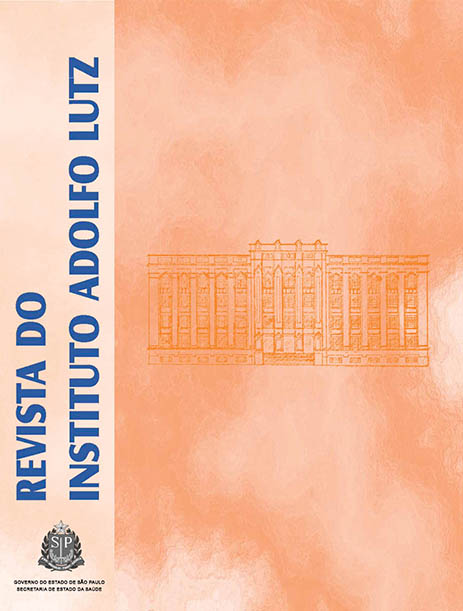Abstract
Healthcare professionals (HCPs) are liable to pathogenic microorganisms infection/colonization, which plays an important role as a potential source of transmission to patients, coworkers, relatives and communities. The present study evaluates the prevalence of Staphylococcus aureus colonization in HCPs who work at a reference hospital in Recife, PE, and the isolates profiles of susceptibility to antimicrobial drugs. A cross-sectional study was undertaken, and HCPs from operating rooms, intensive care units (ICUs), hemodialysis and nephrology units of the Clinical Hospital of Pernambuco were evaluated. S. aureus isolates were identified by standard methods recommended by CLSI and the susceptibility to methicillin and vancomycin was determined by the minimum inhibitory concentration technique (E-test). The prevalence of S aureus observed among HCPs was 25.7%. Among S. aureus strains isolates, the highest percentage of antibiotic resistance was observed in penicillin (91.4%), erythromycin (43.1%) and cefoxitin (17.2%). All of the strains were sensitive to vancomycin. Three S. aureus methicillin-resistant (MRSA) strains were identified, which were isolated from the nursing aides staff. The prevalence of MRSA found in the present study was lower than those reported elsewhere. These findings suggest that a continuous assessment should be performed for better understanding the dynamics of S. aureus colonization/infection in order to reduce the risks of infection by this microorganism.References
1. Safdar N, Bradley E. The risk of infection after nasal colonization with Staphylococcus aureus. Am J of Med. 2008; 121: 310-15.
2. Noble WC. Transfer of vancomycin resistance to methicillin-resistant S. aureus. FEMS Microbiol. Lett. 1992. 93: 195–8.
3. Kluytmans J, Van Belkum A, Verbrugh H. Nasal carriage of Staphylococcus aureus: epidemiology, understanding mechanisms, and associated risks. Clin Microbiol Rev. 1997; 10: 505-20.
4. Clinical and Laboratory Standards Institute (CLSI). Performance standards for antimicrobial susceptibility testing. 18th Informational supplement. M100-S18 CLSI. Baltimore, MD 2008.
5. Clinical and Laboratory Standards Institute (CLSI). Performance Standards for Antimicrobial Disk Susceptibility Testing. 19th Informational supplement. M100-S19 CLSI. Baltimore, MD 2009.
6. Cretnik TZ et al. Prevalence and nosocomial spread of methicillin-resistant Staphylococcus aureus in a long-term-care facility in Slovenia. Infect Control Hosp. 2005; 26: 184-90.
7. Eveillard M, Martin Y, Hidri N, Boussougant Y, Joly-Guillou ML. Carriage of methicillin-resistant Staphylococcus aureus among hospital employees: prevalence, duration, and transmission to households. Infect Control Hosp Epidemiol. 2004; 25: 114-20.
8. Wang JT, Lin SF, Chiu HL, Wang LC, Tai HM, Jiang CF, Chang SC, Chu SH. Molecular epidemiology and control of nosocomial methicillin-resistant Staphylococcus aureus infection in a teaching hospital. Formos Med Assoc. 2004; 103: 32-6.
9. Busato C, Gabardo J, Leão MT. The evolution of the resistance of Staphylococcus aureus found in Health Care Workers correlated with the local consumption of antibiotics. Braz J Infec Dis. 2006; 10: 185-90.
10. Moreira M, et al. Efficacy of a program of prevention and control for methicillin-resistant Staphylococcus aureus infections in an Intesive Care Unit. Braz J Infec Dis. 2007; 11: 57-62.
11. Rabbar M, Yaghoobi M, Kia-Darbandsari B. Prevalence of nasal carriage of Staphylococcus aureus and susceptibility of isolates to Methicillin and mupirocin among Health Care Workers in an Iranian Hospital. Infec Control Hosp Epidemiol. 2006; 27: 323-4.
12.Hurdle J, et al. Analysis of mupirocin resistance and fitness in Staphylococcus aureus by molecular genetic and structural modeling techniques. Antimicrob Agents Chemo. 2004; 48: 4366-76.
13. Thomas RA, et al. Effectiveness of pharmacy policies designed to limit inappropriate vancomycin use: A population- based assessment. Infec Control Hosp Epidemiol. 2002; 23: 683-8.
14. Palazzo IC, Araujo ML, Darini AL. First report of vancomycin-resistant staphylococci isolated from healthy carriers in Brazil. J Clin Microbiol. 2005. 43: 179-85.

This work is licensed under a Creative Commons Attribution 4.0 International License.
Copyright (c) 2010 Instituto Adolfo Lutz Journal
